Nature has equipped animals with astonishing abilities to survive in harsh environments filled with predators. While many creatures rely on speed, strength, or camouflage for protection, some have evolved truly bizarre defense mechanisms that defy imagination. From explosive blood sprays to self-amputation, these survival strategies showcase the incredible ingenuity of natural selection. Let’s explore thirteen of the most unusual defense mechanisms found in the wild.
The Bombardier Beetle’s Chemical Explosion

The bombardier beetle possesses perhaps one of the most chemically sophisticated defense mechanisms in the animal kingdom. When threatened, this insect mixes hydroquinone and hydrogen peroxide stored in separate chambers in its abdomen. These chemicals react violently when combined with enzymes, creating a boiling hot, irritating chemical spray that reaches temperatures of nearly 100°C (212°F). The beetle can precisely aim this chemical weapon at predators with remarkable accuracy, often targeting the eyes or sensitive areas. What makes this defense truly extraordinary is the beetle’s ability to fire multiple rapid bursts in various directions, allowing it to escape while the predator deals with the painful chemical cocktail. Scientists continue to study this mechanism for applications in various fields, including medicine and engineering.
The Hagfish’s Slime Defense
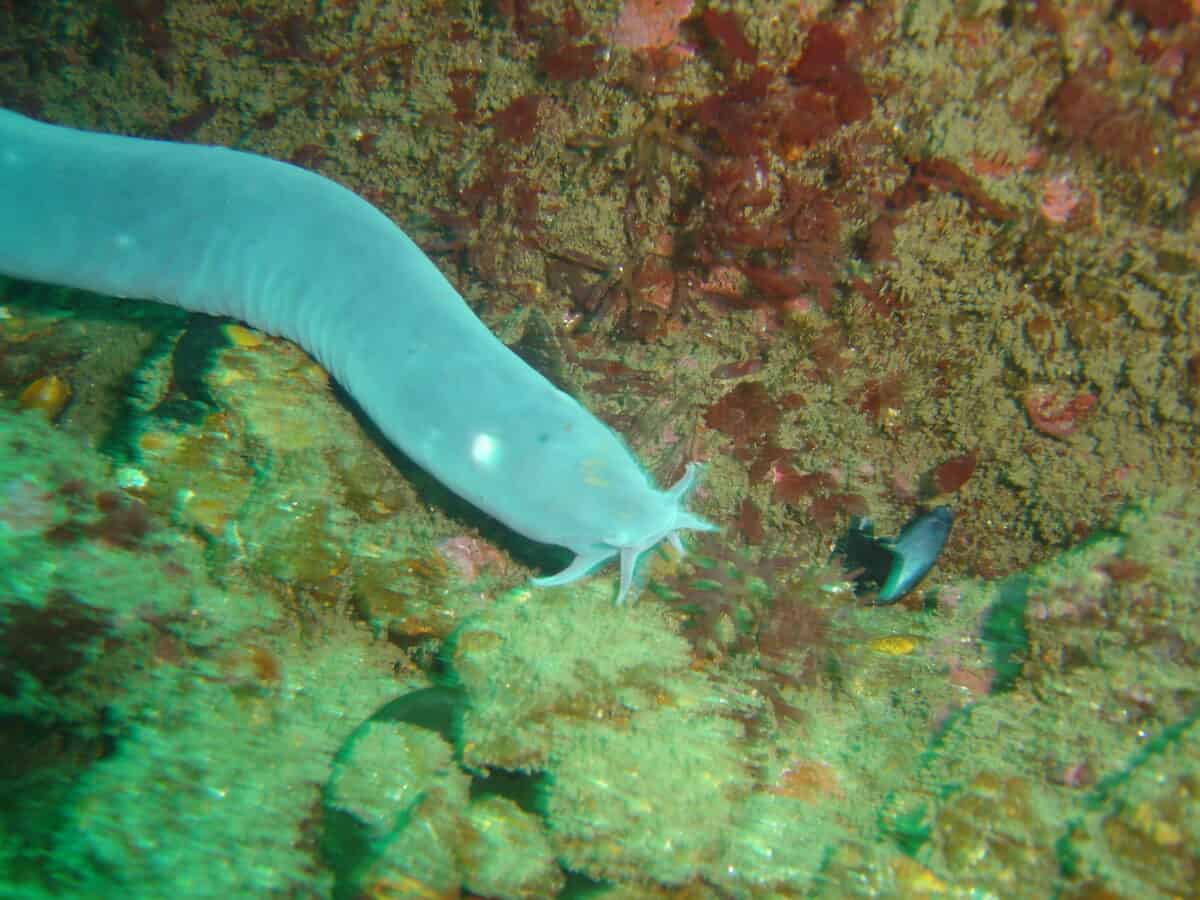
When attacked, the hagfish deploys what might be the most disgusting yet effective defense mechanism in the ocean. This primitive, eel-like creature can produce an extraordinary amount of slime from specialized glands along its body—up to 5.5 gallons (20 liters) in mere seconds. This isn’t ordinary slime; it’s a unique substance containing thousands of microscopic threads that, when combined with seawater, expand to create a suffocating, gelatinous mass. Predators that bite hagfish often find their gills clogged with this slime, forcing them to retreat or risk suffocation. The hagfish itself can tie itself in a knot, which it then slides down its body to scrape off excess slime, preventing self-suffocation. This remarkable defense mechanism has even inspired scientists to develop new types of sustainable, strong materials based on the properties of hagfish slime.
The Horned Lizard’s Blood-Shooting Eyes
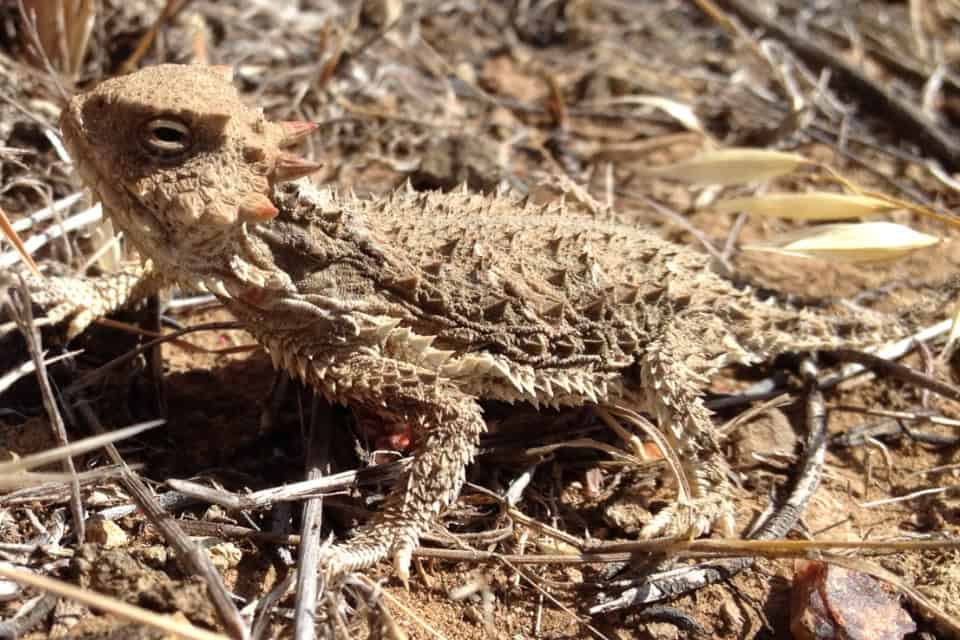
Among reptiles, the horned lizard stands out for its truly bizarre defense mechanism. When cornered by predators like coyotes or foxes, some species of horned lizards can increase the blood pressure in small vessels near their eyes until they rupture, causing a controlled stream of blood to squirt up to 5 feet (1.5 meters). This blood isn’t just startling—it contains chemicals that are particularly foul-tasting to canine predators. The blood causes intense irritation in the predator’s mouth, often making them retreat and remember to avoid these lizards in the future. This defense mechanism is metabolically expensive for the lizard, requiring significant energy to replace the lost blood, so it’s typically used as a last resort after other defenses like camouflage and puffing up have failed. Remarkably, the lizard can control which eye shoots blood and can repeat the process multiple times if necessary.
The Tennessee Walking Stick’s Autohemorrhaging

The Tennessee walking stick insect employs a defense mechanism called autohemorrhaging, which is essentially controlled bleeding. When threatened, this insect can rupture weak spots in its exoskeleton, causing its hemolymph (insect blood) to ooze out. This blood contains chemicals that are repulsive to predators like ants and spiders, creating a protective barrier. Unlike vertebrate blood, the walking stick’s hemolymph contains chemicals specifically evolved to be repugnant to its common predators. The insect can control the amount of blood released and stop the bleeding when the threat has passed, minimizing its overall blood loss. This defense showcases how even seemingly harmful behaviors like self-induced bleeding can become advantageous through evolutionary adaptation when the benefits of survival outweigh the costs of minor injury.
The Opossum’s Death-Feigning
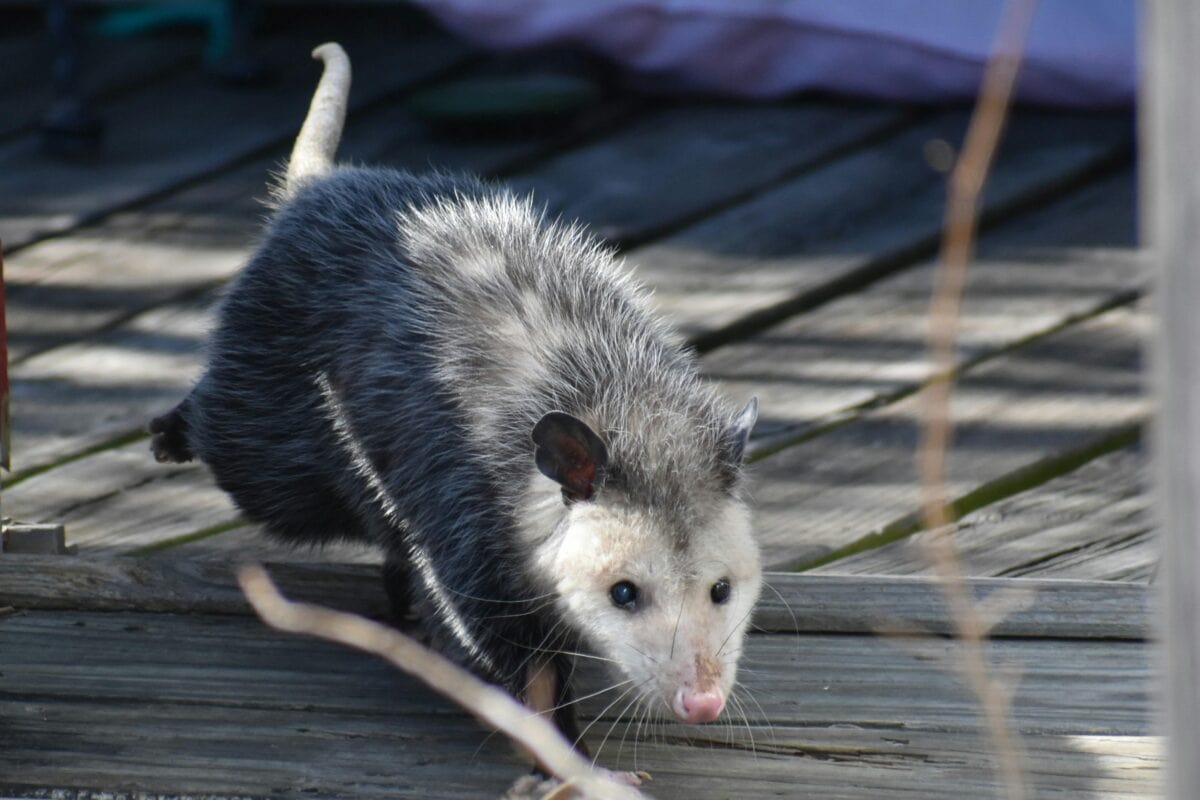
The opossum’s famous “playing dead” behavior represents one of the more dramatic behavioral defense mechanisms in the animal kingdom. When confronted with danger, the opossum doesn’t simply lie still—it undergoes an involuntary physiological response akin to fainting. Its body becomes limp, its breathing slows dramatically, it bares its teeth in a grimace, and it secretes a foul-smelling substance from its anal glands. This elaborate performance can last from a few minutes to several hours. What makes this defense particularly effective is that many predators are triggered to hunt by movement and lose interest in prey that appears to be dead and decomposing. The opossum has little control over this response—it’s a neurological reaction to extreme fear, making it one of the few involuntary mimicry defenses in nature. This strategy has proven so successful that opossums have survived largely unchanged for millions of years, making them one of the oldest surviving mammal species in the Americas.
The Malaysian Exploding Ant’s Self-Sacrifice

In the forests of Southeast Asia, the Malaysian exploding ant (Colobopsis explodens) takes colony defense to an extreme level of self-sacrifice. When threatened, specialized worker ants called “doorkeepers” can contract their abdominal muscles so violently that they rupture their own bodies, spraying a toxic, corrosive yellow substance in all directions. This sticky substance can immobilize predators and contains compounds that are irritating and sometimes lethal to attackers. This defense mechanism represents one of the most dramatic examples of altruistic behavior in the animal kingdom—the ant dies in the process, but its sacrifice protects the colony, especially the queen who carries the colony’s genetic future. What makes this defense particularly effective is that these ants often attack in groups, creating a devastating chemical assault that few predators can withstand. Scientists have identified several unique compounds in the explosive secretion that may have medicinal applications, showing how even extreme defense mechanisms can hold value for human research.
The Sea Cucumber’s Sticky Threads and Organ Ejection

Sea cucumbers employ not one but two bizarre defense mechanisms that would seem like science fiction if they weren’t real. When threatened, many species can expel sticky, elongated threads called Cuvierian tubules from their anus. These threads rapidly expand in seawater, becoming incredibly sticky and entangling predators. Some species take this defense further by practicing evisceration—literally ejecting parts of their internal organs through their anus or body wall to distract predators. Remarkably, the sea cucumber can regenerate these complex organs within a few weeks. Some species can also make their body wall either rigid or soft by controlling the stiffness of the collagen that forms their body wall, allowing them to wedge themselves into crevices or become more difficult to bite. Certain tropical sea cucumbers even contain a toxin called holothurin that can kill fish and is being studied for potential anticancer properties, adding pharmaceutical value to these unusual defense mechanisms.
The Cuttlefish’s Dynamic Camouflage

The cuttlefish possesses perhaps the most sophisticated camouflage system in the animal kingdom. Unlike static camouflage, cuttlefish can change their appearance in less than a second using specialized skin cells called chromatophores, leucophores, and iridophores. This remarkable system allows them to match not just colors but also textures and patterns of their surroundings with astonishing precision. Cuttlefish can even create moving patterns across their skin, and studies have shown they can match backgrounds they see only with their peripheral vision. What makes this defense truly extraordinary is that cuttlefish are colorblind, yet can match colors perfectly—a paradox that scientists are still working to understand. Beyond camouflage, they can create dazzling, hypnotic patterns that may momentarily confuse predators, giving the cuttlefish valuable escape time. Perhaps most impressively, they can display different patterns on different sides of their body simultaneously, allowing them to hide from predators on one side while displaying mating signals to potential partners on the other.
The Wood Frog’s Freeze-Tolerance
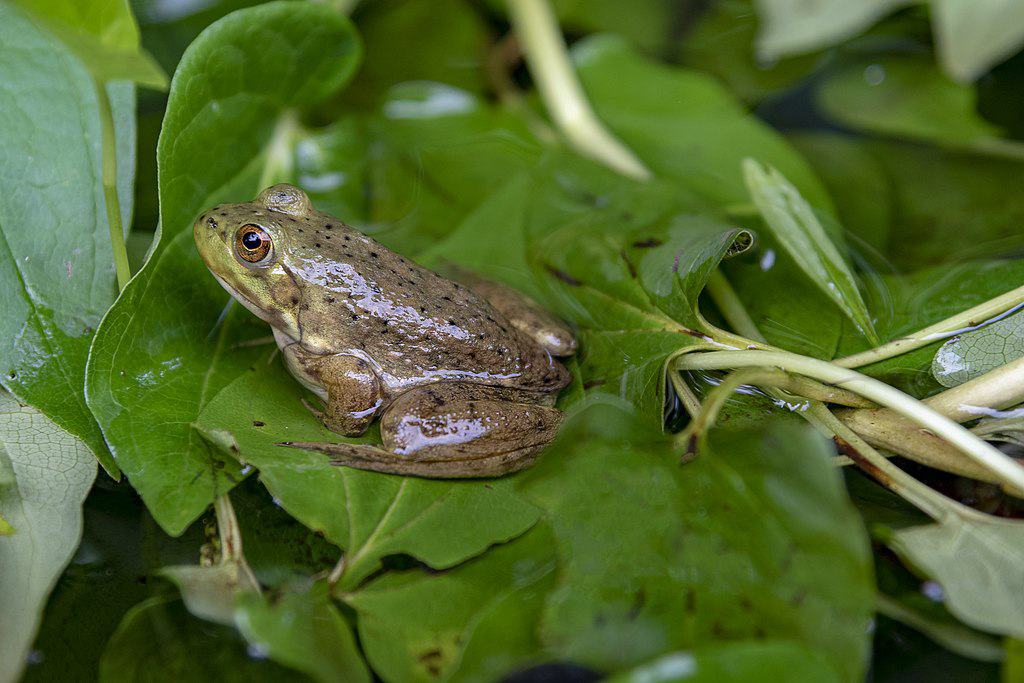
The wood frog (Lithobates sylvaticus) employs what might be the most science-defying defense mechanism among vertebrates—it can literally freeze solid during winter and return to life in spring. As temperatures drop, these frogs produce large quantities of glucose and urea that act as natural antifreeze in their vital organs. Their hearts stop beating, they cease breathing, and up to 65% of their total body water converts to ice. For all practical purposes, they are biologically dead. Yet when spring arrives, they thaw from the inside out and resume normal functions within hours. This remarkable adaptation allows wood frogs to survive in regions far north of where most amphibians can live, including parts of the Arctic Circle. Scientists studying this mechanism have identified specialized proteins that prevent ice crystals from damaging cell structures and are researching applications for human organ preservation. The wood frog’s freeze-tolerance represents one of the most extreme physiological adaptations known in the animal kingdom and demonstrates how defense mechanisms can evolve not just against predators but against environmental threats as well.
The Hairy Frog’s Wolverine-Like Claws

The Central African hairy frog (Trichobatrachus robustus) possesses one of the most painful-sounding defense mechanisms in the animal kingdom. When threatened, this frog can break the bones in its own toes, pushing the sharp, broken bone fragments through its skin to create makeshift claws. These bone claws are connected to a small piece of collagen that can pull them back into place when the danger has passed. This mechanism gives the otherwise vulnerable amphibian a formidable weapon against predators. What makes this adaptation particularly unusual is that the frog deliberately breaks its own bones as a defensive strategy—a mechanism not seen in any other vertebrate. This extreme adaptation earned the species the nickname “Wolverine Frog” after the X-Men character with retractable claws. Male hairy frogs also develop hair-like structures along their flanks and thighs during breeding season, which increase surface area to absorb oxygen from water—an unrelated but equally unusual adaptation that contributes to their otherworldly appearance.
The Autotomy of Lizard Tails

Many lizard species practice autotomy—the ability to voluntarily detach a body part when captured. While this may seem like a simple mechanism, the complexity behind it is remarkable. Lizard tails have pre-formed fracture planes between vertebrae that allow for clean breaks without significant blood loss. When a predator grabs the tail, the lizard contracts specific muscles that fracture these planes, releasing the tail instantly. What happens next is even more impressive—the detached tail continues to wiggle vigorously for up to 30 minutes, distracting the predator while the lizard escapes. This movement is possible because the tail contains a neural network that can operate independently from the brain, similar to a primitive nervous system. Most species can regenerate their tails over several months, though the replacement lacks the vertebrae of the original, consisting instead of a cartilage tube. This sophisticated sacrifice-and-regeneration system showcases how losing a non-vital body part can be an evolutionary advantage when it significantly increases survival chances.
The Boxer Crab’s Stinging Anemone Gloves

The boxer crab (Lybia spp.) showcases one of the most sophisticated tool-using defense mechanisms in marine invertebrates. These small crabs collect sea anemones and hold one in each claw, using them as living weapons. The anemones contain stinging cells called nematocysts that can inject venom into predators or prey. What makes this relationship truly remarkable is how the crab maintains its anemone “boxing gloves.” If a boxer crab has only one anemone, it will tear it in half, allowing each piece to regenerate into a complete anemone—essentially farming its own weapons. The anemones also benefit from this arrangement, receiving mobility and access to food particles from the crab’s meals. This mutualistic relationship has evolved to such specificity that certain boxer crab species will only use particular anemone species for their defense. Scientists have observed that the crabs will wave their anemone-armed claws at threats in a boxing-like motion, giving them their common name and demonstrating one of the most sophisticated examples of tool use for defense in invertebrate animals.
Conclusion: The Extraordinary Defense Mechanisms That Showcase Nature’s Innovation
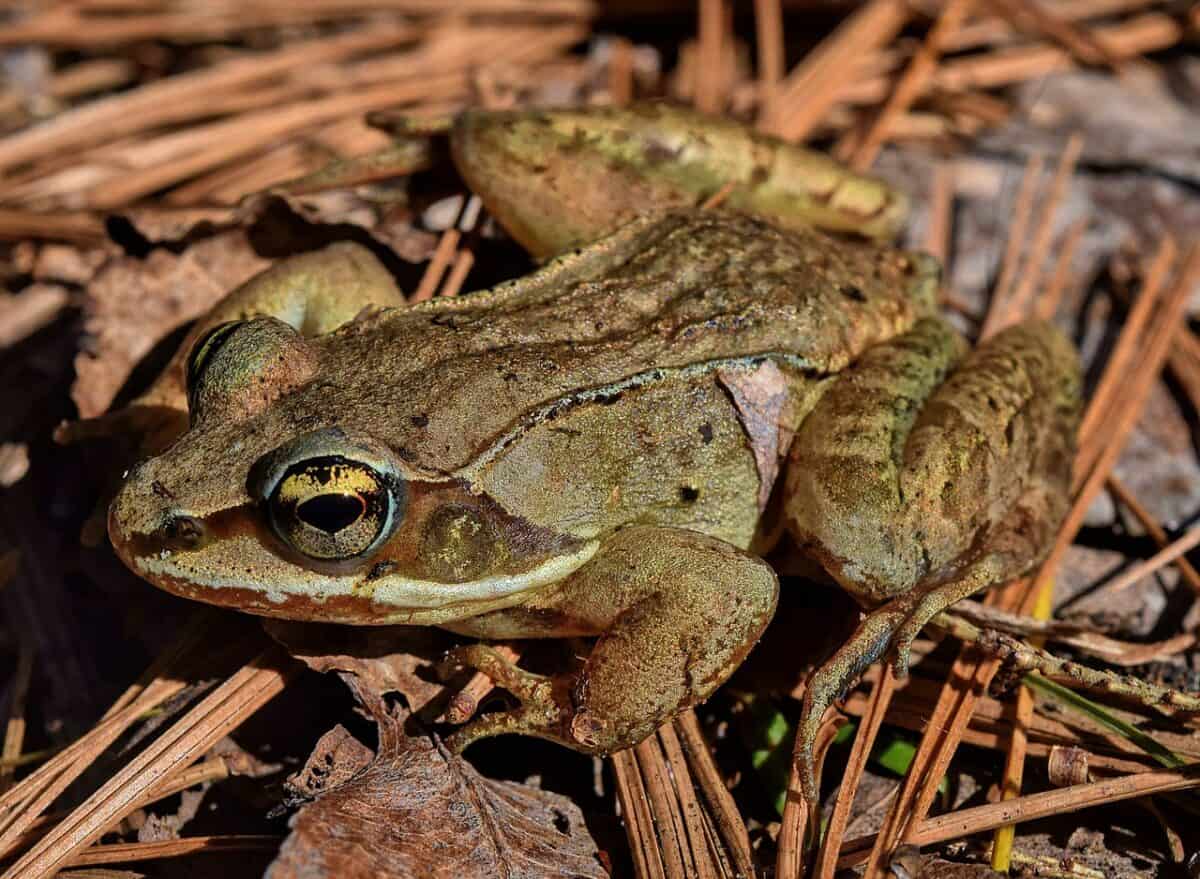
These 12 bizarre defense mechanisms demonstrate the incredible diversity of survival strategies that have evolved over millions of years. From chemical warfare to self-sacrifice, nature has developed solutions to predator-prey challenges that continue to astonish scientists. Many of these adaptations are inspiring new technological and medical innovations, from wound healing treatments based on hagfish slime to freeze-tolerance applications in organ preservation. What all these defenses share is their development through the relentless process of natural selection, where even seemingly extreme adaptations can become advantageous when they increase survival chances. As we continue to explore Earth’s biodiversity, we undoubtedly will discover even more remarkable defense mechanisms, further expanding our understanding of evolution’s creative power in the ongoing battle for survival in the wild.
- How Do Whales Communicate Across Thousands of Miles? - August 16, 2025
- 15 Mammals That Hike Thousands of Miles Every Year - August 16, 2025
- 12 Ways Zebras Communicate Without Speaking - August 16, 2025

